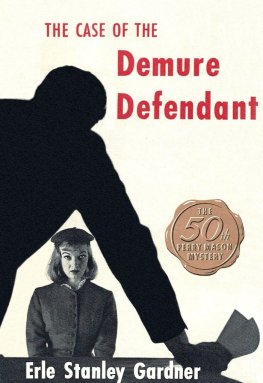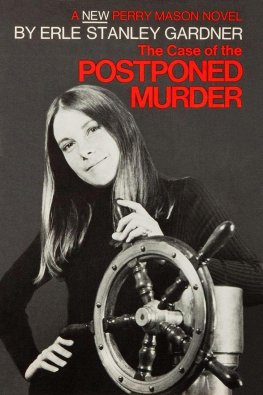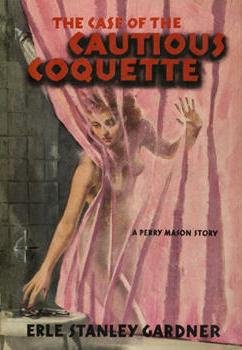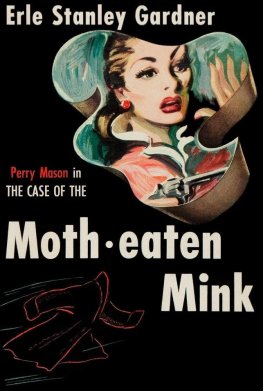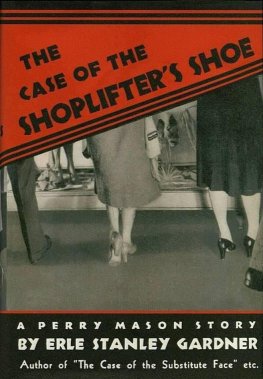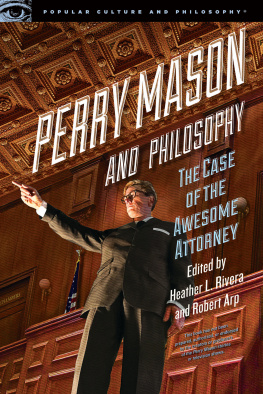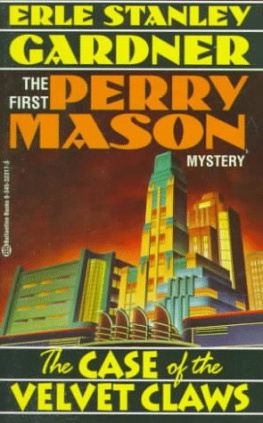The Case of the Dubious Bridegroom
Erle Stanley Gardner
To
Mrs. Frances G. Lee
Captain, New Hampshire State Police
And One of the Few Women
Who Ever Kept Perry Mason Guessing
This book was written under rather unusual circumstances. The last part of it was dictated while I was in Boston attending a seminar on Homicide Investigation at the Department of Legal Medicine of the Harvard Medical School.
I had for some time heard about these seminars, which are sponsored by Mrs. Frances G. Lee of New Hampshire (a Captain of the New Hampshire State Police). Invitations to attend are as sought after in police circles as bids to Hollywood by girls who aspire to be actresses.
Despite the fact I had heard so much about these seminars, I was hardly prepared for what I found.
The instructors, under the guidance of Dr. Alan R. Moritz, are not only brilliant but practical men who are daily accomplishing feats of crime detection which are little short of astounding. The department works in connection with both the Boston city police and the state police of Massachusetts. They have at their command every facility, every bit of scientific knowledge available, and they have brains.
Dr. Robert P. Brittain, from the University of Glasgow, doctor of medicine, criminologist, and barrister, was not only a mine of information as to practical detective work on this side of the water, but was able to furnish the latest information as to British and European police methods of crime detection. Incidentally, from comments I heard, as well as from my own observation, I realize that Dr. Brittain, by his presence and character, made an outstanding contribution to international understanding and friendship at this seminar, and I understand from no less an authority than Captain Lee herself that this was true all during his stay in this country.
The material and methods demonstrated at this seminar were in many instances years ahead of methods now available to the student who has to rely solely upon even the most modern works of forensic medicine and toxicology.
Back of all this, and as the guiding spirit, is Captain Frances G. Lee. I dont believe she has ever overlooked a detail in her life. Captain Lee has reconstructed in small scale (one foot to the inch) some of the most puzzling crimes which have been encountered by police. The detail of these models is absolutely unbelievable. If a state trooper is shown holding a notebook and pencil, you can be sure that the pencil, perhaps half the size of a toothpick, is a genuine pencil containing genuine lead, and that notes in the miniature notebook about the size of ones thumbnail have actually been written with that pencil.
It is not expected that members of the class will be able to solve all of these crimes. They are not whodunits. They are not like the photographic crimes represented in some of the magazines where the reader is requested to furnish a solution. These are models used to develop and test the powers of observation and concentration on the part of the students. They are expected to point out the significant clues which, when run down, will lead to a correct solution. The observers are expected to notice and remember everything in connection with the crimes which are assigned to them.
They then report on these crimes, give their deductions, and state what should be done in order to bring about a correct solution. Not all of these deaths are homicides. Some of them may be suicides masquerading as murders, or murders masquerading as suicides.
They cannot be studied casually; they cannot be solved easily. I mention these matters because subsequently, when students reported on their assignments, I had an opportunity to watch the police mind at work.
Now, I am perfectly willing to concede that these were picked men who were in attendance at that seminar. Attendance is limited to less than two dozen students so that instruction can be highly personalized and a great deal of ground covered in a short space of time. Nevertheless, these men are typical of the highest type of police officer which is being developed in considerable numbers in this country.
It is hard to believe that any group of officers, reporting one after the other, could do the things I saw these men do. They knew what to look for, they knew where and how to look, and when they found something that was significant, they were able to evaluate the reason and advance an explanation. And these homicides have for the most part been conceived with a diabolical ingenuity which would give the proverbial Philadelphia lawyer brain-fog within the first few minutes.
We writers like to record the adventures of outstanding, individual detectives, who are generally portrayed as thinking circles around the police. But I am now sure of one thing. I am not going to have any of Mrs. Lees graduates appearing in my books. Such an officer would not only solve the crime as soon as the hero could, but he just might be a hundred or so pages ahead of the procession.
This is a marvelous work that Captain Lee is doing. It is a progressive work, since a nucleus of highly trained, efficient men can in turn train others, and by the example they set in their work, inspire others to greater efficiency.
The information I received at this seminar is invaluable to me. The people I met are an intellectual inspiration, and I want to take this opportunity to thank these police officers for their splendidly courteous treatment of me: a rank outsider so far as their profession is concerned, and, so far as I know, the only person not a police officer who has ever been invited to take one of these courses.
As for Captain Lee, I have dedicated this book to her as an expression, in some measure, of my appreciation; and in admiration of the manner in which her mind, working with the accurate precision of a railroad watch, has brought into existence the over-all plan of a course in training that is helping to make the competent state police official as much a professional man as the doctor or lawyer. I herewith tender her my profound respect, my deepest admiration, and my eternal gratitude.
Erle Stanley Gardner
Ridgefield, Connecticut
November 1, 1948
Perry Mason Nodding over a lawbook, he caught sight of a lovely pair of legs on the fire escape. That started it
Virginia Colfax Her figure was hard to believe, and so was her alibi
Della Street Her womans eye caught three details that escaped her boss, Perry Mason
Edward Charles Garvin He was on a honeymoon, but who was his wife?
Ethel Carter Garvin Her hard-headed scheming cost her first her husband, then her lover
Lorraine Evans Garvin A beautiful redhead who loved her husband and his money but not necessarily in that order
Paul Drake A hard-working private eye whose loose- jointed, indolent gait makes a difficult job look simple
George L. Denby Meticulous secretary-treasurer of Garvins mining company who balanced the books but juggled the figures
Frank C. Livesey Pudgy, jovial, middle-aged man who preferred his figures animate and feminine
Seora Inocente Miguerinio Well-padded hostess of the Vista de la Mesa Inn
Alman B. Hackley Knew how to make women fall for him; how to shake them was sometimes difficult
Frank L. Bynum Thought his young sister needed his protection
Virginia C. Bynum She was Franks sister all right, but he couldnt have been more wrong
Sergeant Holcomb A humorless guardian of the law
Lieutenant Tragg Worked out of Police Homicide, and he could match trickery with technicalities when out to get his man
Mortimer C. Irving A passing motorist he made the fateful mistake of examining a deserted parked car

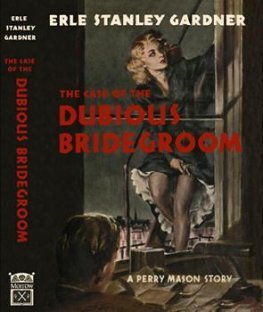
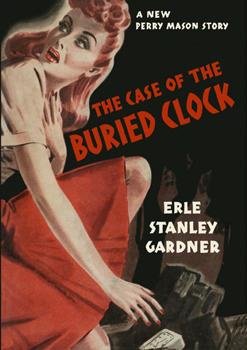
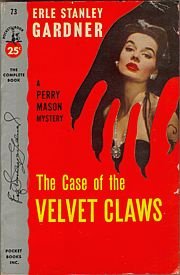
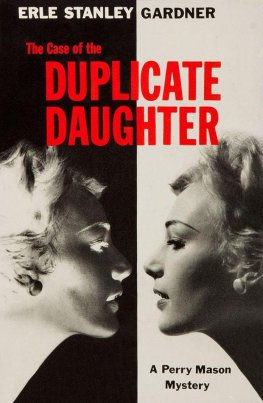

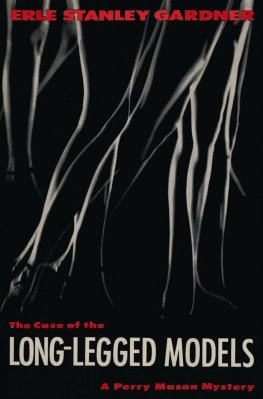
![Erl Gardner - The Case of the Deadly Toy [= The Case of the Greedy Grandpa]](/uploads/posts/book/924181/thumbs/erl-gardner-the-case-of-the-deadly-toy-the.jpg)
